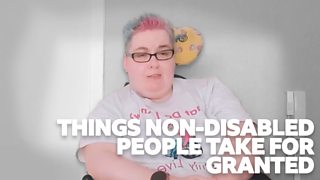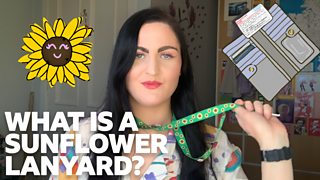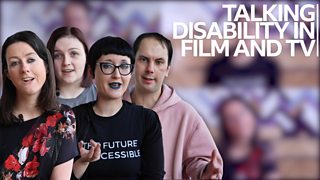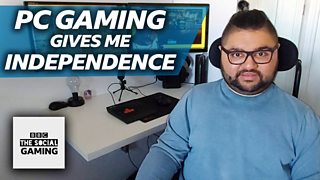Why I include disabled characters in my writing
By Hayleigh Barclay // Βι¶ΉΤΌΕΔ The Social Contributor // 9 Sept 2021
As a writer, one of the strangest questions I’ve been asked is, why do I include disabled characters in my work? To me, someone born with the neuromuscular condition Spinal Muscular Atrophy, I reply with an awkward smile and try to give a sensible answer. The truth is it hadn’t occurred to me that the inclusion of disability would draw such attention. With 14.1 million disabled people living in the UK, is it really all that surprising to have disabled characters at the heart of stories?

For a few years now, I’ve written short stories for an online magazine and, more recently, my novel Girl of the Ashes was published. As the latter features able-bodied and disabled kick-ass female vampires, this seems to peak people’s interest. Good – we should be talking positively about disability issues.
Growing up, I don’t remember seeing anyone like me on tv or in films and although representation is improving, slowly, I still question where we fit into the future of storytelling. Where is the rom-com smashing the summer box office with a disabled lead stealing every fangirl’s heart? Or the action blockbuster with a wheelchair using actress playing a spy hellbent on saving the world? Unless we are included in the same forms of stories afforded to able-bodied actors then a succinct and not-so-subtle message is delivered – we don’t belong.
All too often our roles in society are laid out for us; we are either the down trodden at the caveat of a pity party, or celebrated with the saccharine fuelled cheers of being declared inspirational. Unless the creative industries change this narrative, then this is the only image of disability that viewers/readers/listeners will recognise.
If we look at how successful shows have created disabled characters it’s evident that representation can be effective. For instance, who can forget Eastender’s feisty, no-nonsense Donna played by Lisa Hammond or the cheeky prankster Rem Dogg in Bad Education. Two very different shows, but both demonstrating that we live in a diverse world with the capacity to represent people of all abilities.
This year the Βι¶ΉΤΌΕΔ pledged to invest £100 million into diversity representation, with newly appointed director for creative diversity, June Sarpong, planning to dedicate 8% of on-air roles to disabled talent. It was also announced that actress Ruth Madeley will star in Βι¶ΉΤΌΕΔ 2’s Independence Day? How Disabled Rights Were Won, which documents the lead up to the creation of The Disability Discrimination Act. When interviewed by Stylist, Madeley commented, “I think every disabled person has been waiting for a show like this” and I share her enthusiasm. Thanks to protesters, disability rights became legislation in 1995 and, with dramas such as Independence Day? making mainstream television, it shows our history and stories have the same pulling power as other minority groups.
Moving away from the Βι¶ΉΤΌΕΔ, it’s clear that more networks are taking steps to make disability more visible in their shows. Netflix, ITV, and Channel 4 (such as Special, Emmerdale, and The Last Leg) are amongst those adding more disabled characters and presenters to their fixtures.
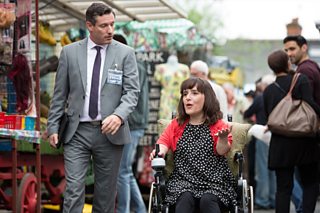
So, on the surface, representation looks to be improving, but I can’t help wondering why people ask about my decision to write disabled characters. When discussing the issue with friends (and scrolling through social media posts) there is still an overwhelming feeling of being underrepresented. Perhaps we need to delve further into the deeper issues. Is it in fact the way disability is portrayed? Do more boundaries need to be pushed? Maybe to include more body positivity when depicting relationships and sex. Are the creative industries as inclusive as they should be? Are there enough opportunities for disabled people to be trained and become actors, artists, writers, editors, producers, musicians?
According to Forbes contributor Gus Alexiou, only 7.8% of onscreen talent identify as disabled and, when considering those working behind the scenes, the number is even fewer at 5.2%. It begs the question, where exactly are the job opportunities? Let’s not believe the old rhetoric of disabled people not wanting to work. We do. The problem we face is that every door that metaphorically open seems to be situated at the top of a very large staircase. No lifts in sight. Where is the disabled access?
Until these issues are fully investigated then disabled audiences will continue to feel and call out the inequalities in the industries. In the age of social media, our voices are no longer isolated like our predecessors. Our collective message has the potential to reach new audiences and attract attention across the globe. In other words, our voices are limitless – the question remains who will listen?
All too often our roles in society are laid out for us; we are either the down trodden at the caveat of a pity party, or celebrated with the saccharine fuelled cheers of being declared inspirational.
It’s perfectly reasonable for audiences to want to be reflected in the products they consume. It is reasonable to assume that when consumers see themselves portrayed in movies, books, and merchandise they are likely to buy the product and when it’s estimated that the spending power of disabled households is in the region of £274 billion, what industry wouldn’t want a slice of that pie?
Not only does this relate to adults, but children/teenagers are supremely aware of the messages surrounding them. Add this to the fact that our newest generation are by far the one most immersed in technology. Between streaming sites, websites, and of course, social media, how the world is presented and communicated to children is more important than ever. Will we ever see a disabled Disney Princess or will there ever be a Platinum-selling, wheelchair using, popstar who tours the continent with sell-out concerts? These might seem like trivial questions to people, but to children and teenagers, actors, musicians, and fictional characters are often their first role models.
Whatever the future holds for the creative industries, disabled people must be involved in the conversation. As the saying goes, nothing about us without us. To include us, the world opens to endless possibilities of new storytelling and opportunities for emerging talent. The future of our stories must start today.
